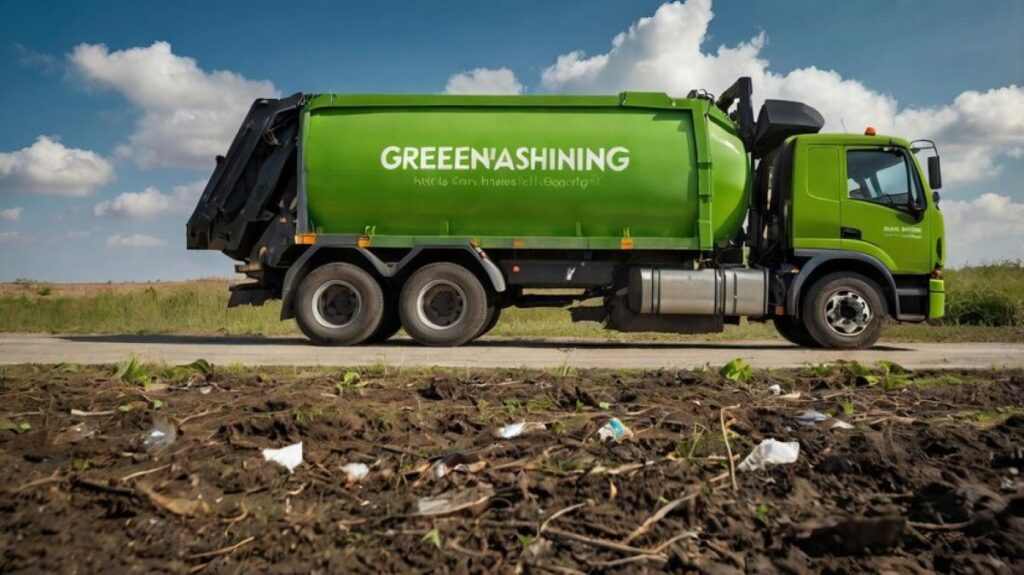Green waste removal encompasses the collection and disposal of organic materials from residential properties, including:
- Tree branches and limbs
- Grass clippings
- Garden prunings
- Leaves and plant debris
- Tree stumps
- Palm fronds
These services play a vital role in maintaining property aesthetics and safety while supporting environmental sustainability. Professional green waste removal companies handle the entire process, from collection to responsible disposal at designated facilities.
Understanding the green waste removal cost helps homeowners:
- Budget effectively for regular maintenance
- Plan seasonal garden clean-ups
- Compare service providers
- Avoid unexpected expenses
- Make informed decisions about disposal methods
The cost of green waste removal varies significantly based on several factors. A typical service might range from £50 for basic garden waste collection to £500+ for comprehensive tree removal services. These prices reflect the necessary equipment, labour, disposal fees, and compliance with local regulations.
Property owners who grasp these cost components can make strategic decisions about their garden maintenance schedule and choose services that align with both their budget and environmental values. This knowledge helps create a balanced approach to property upkeep while maintaining compliance with local council requirements.
How Does the Volume and Type of Green Waste Affect Removal Costs?
The size and nature of green waste directly influence removal costs through several key factors:
1. Volume Considerations:
- Small loads (1-2 cubic metres) – suitable for standard ute transport
- Medium loads (3-5 cubic metres) – requiring larger trucks
- Large loads (6+ cubic metres) – necessitating multiple trips or specialised equipment
2. Types of Green Waste and Their Cost Impact:
Light Materials
- Grass clippings
- Leaves
- Small branches
- Garden prunings
Heavy Materials
- Tree trunks
- Large branches
- Root balls
- Dense vegetation
Heavy materials demand specialised equipment and additional labour, resulting in higher costs. A load of tree trunks might cost 50-100% more than an equivalent volume of grass clippings.
3. Processing Requirements:
The processing requirements can significantly affect costs, particularly when considering mulching capabilities, sorting needs, contamination levels, and equipment specifications.
Green waste containing mixed materials requires additional processing time. Clean, uniform waste types streamline the disposal process, reducing costs. Contaminated loads with non-organic materials face surcharges or rejection at processing facilities.
The combination of these factors creates a sliding scale of costs. A small load of grass clippings might cost £50-£100, while the same volume of heavy timber could reach £150-£250. Professional waste removal services assess these variables to determine accurate pricing for each specific situation.
Why Does Property Location and Service Frequency Matter When It Comes to Green Waste Removal Expenses?
The Impact of Property Location on Costs
Property location plays a significant role in determining green waste removal costs. Urban areas with high population density tend to have lower rates due to established service routes and competition among providers. On the other hand, rural properties often face higher charges because of:
- Extended travel distances for service vehicles
- Limited provider options in the area
- Additional fuel and time requirements
How Service Frequency Affects Pricing
The frequency of green waste collection directly impacts service pricing. Regular scheduled pickups typically offer cost advantages:
Weekly Collections
- Most economical per-collection rate
- Predictable expense for budgeting
- Smaller waste volumes per pickup
Monthly Collections
- Higher per-collection cost
- Larger waste volumes to manage
- Potential storage challenges
Seasonal Considerations
- Spring/autumn garden cleanups require more frequent service
- Winter months might need minimal collections
- Summer growth can demand additional pickups
The Role of Distance from Disposal Facilities
Distance from disposal facilities affects pricing structures. Properties located far from green waste processing centres face increased transportation costs. Local council regulations and permit requirements in different areas can add to the expense, particularly in Sydney’s regulated tree management zones.
Service providers factor these location-specific elements into their pricing models, making it essential for homeowners to understand their property’s unique circumstances when budgeting for green waste removal.

What Are the Different Options Available for Homeowners in Terms of Green Waste Disposal Methods?
Homeowners have several pathways to manage their green waste effectively, ranging from professional services to hands-on approaches.
Professional Service Options:
- Council-operated green bin collection services
- Private waste management companies
- Specialist arborist services for tree-related waste
- Skip bin hire for large-scale garden cleanups
DIY Disposal Methods:
- Home composting systems
- Garden mulching equipment rental
- Self-transportation to local waste facilities
- Green waste shredding for garden reuse
Each disposal method carries distinct advantages based on specific circumstances. Professional services offer convenience and compliance with local regulations, while DIY methods can prove cost-effective for smaller volumes.
The choice between these options often depends on:
- Property size
- Waste volume
- Time availability
- Physical capability
- Budget constraints
- Local council regulations
Additional Considerations:
- Some councils provide seasonal green waste collection events
- Community garden groups might accept certain types of green waste
- Local nurseries sometimes collect specific plant materials
- Shared equipment schemes exist in some neighbourhoods
Professional services remain the preferred choice for handling substantial amounts of green waste, particularly when dealing with tree removals or large-scale garden renovations. DIY methods suit regular garden maintenance and smaller properties where waste volumes remain manageable.
How Can Homeowners Make Environmentally Friendly Choices When It Comes to Green Waste Removal?
Sustainable green waste management starts right at home. Homeowners can transform their garden waste into valuable resources through several eco-friendly practices:
Composting Solutions
- Create nutrient-rich soil by combining grass clippings with fallen leaves
- Set up a dedicated composting bin in a shaded area of the garden
- Layer green materials (fresh cuttings) with brown materials (dried leaves)
- Monitor moisture levels to ensure optimal decomposition
Wood Chip Applications
- Convert tree branches and prunings into mulch for garden beds
- Use wood chips to:
- Suppress weed growth
- Retain soil moisture
- Regulate soil temperature
- Create natural pathways
Smart Garden Planning
- Designate specific areas for different types of green waste
- Implement a rotating schedule for garden maintenance
- Choose native plants that require less pruning
- Keep a garden diary to track waste production patterns
Local councils often provide green bins and collection services to support these environmentally conscious practices. Some areas also offer community composting programmes where neighbours can share resources and knowledge. These sustainable approaches reduce landfill waste while creating valuable materials for garden health and maintenance.
What Are Some Typical Price Ranges for Different Types of Green Waste Removal Services?
The cost of green waste removal services varies based on several factors, with different service types carrying distinct price points. Understanding these price ranges helps homeowners make informed decisions about their green waste management.
1. Curbside Pickup Services
Curbside pickup represents a convenient option for regular green waste disposal. This service typically includes:
- Collection of grass clippings
- Leaves and small branches
- Garden trimmings
- Seasonal plant waste
Here are the typical price ranges for curbside pickup services:
- Weekly Collections: £5-£10 per month
- Bi-weekly Collections: £8-£15 per month
- Monthly Collections: £12-£20 per month
Additional Fees:
- Extra bins: £2-£5 per bin
- Special collections: £10-£20 per service
- Excess waste: £5-£15 per additional bag
Many local councils offer subsidised rates for green waste collection, reducing costs for homeowners. Private service providers might charge premium rates but offer enhanced flexibility in collection schedules.
Service Limitations:
- Weight restrictions per bin
- Size restrictions for branches
- Specific collection days
- Seasonal availability
The price structure often reflects the local market conditions, competition among service providers, and the specific requirements of the area. Homeowners should check with multiple service providers to compare prices and service inclusions.
2. One-Time Cleanups by Professionals or Arborists
Professional arborists charge between $200 to $500 for single-visit green waste removal services. These rates reflect the comprehensive nature of their work:
- Basic Yard Cleanup: $200-$300
- Removal of fallen branches
- Clearing of dead vegetation
- Collection of loose green debris
- Medium-Scale Projects: $300-$400
- Tree trimming waste disposal
- Garden bed clearing
- Shrub removal
- Large Property Cleanups: $400-$500+
- Multiple tree pruning waste
- Dense vegetation clearing
- Bulk green waste removal
The exact cost depends on several factors:
- Property size
- Amount of waste
- Equipment requirements
- Labour intensity
- Access difficulty
Many arborists include waste disposal fees in their service quotes. Professional services also provide proper documentation for council requirements and ensure compliance with local disposal regulations. These services prove particularly valuable for properties requiring specialist equipment or technical expertise for safe waste removal.
In areas prone to wildfires, it’s essential to consider fire safety measures during these cleanups, especially when dealing with large amounts of dry vegetation which could pose a fire risk.
3. Specialized Arborist Services
Certified arborists provide advanced tree care services that extend beyond basic green waste removal. These specialised services include:
- Tree Pruning and Shaping: £150-£500 per tree
- Crown Reduction: £200-£800 depending on tree size
- Stump Grinding: £80-£300 per stump
- Root Management: £200-£600 per treatment
- Disease Treatment: £100-£400 per application
Professional arborists conduct thorough assessments to identify specific tree care needs. Their expertise helps prevent future issues and maintains tree health, reducing long-term maintenance costs.
Additional services might include:
- Tree risk assessment reports: £150-£300
- Soil analysis and treatment: £100-£250
- Emergency tree services: £300-£1000
- Pest management: £150-£400 per treatment
These specialised services require advanced equipment and expertise, reflected in their pricing structure. Local council permits might be necessary for certain procedures, adding £50-£200 to the total cost. Property owners should verify their arborist’s credentials and insurance coverage before proceeding with any specialised tree work.

Why Is It Important to Understand Green Waste Removal Costs?
Knowing the costs of green waste removal helps homeowners make better decisions about how to maintain their property. Factors like the amount and type of waste, where the property is located, and how often services are needed all affect the budget for maintenance and the impact on the environment.
Smart homeowners know that it’s important to:
- Compare quotes from different service providers to get the best prices
- Assess various disposal methods based on their specific requirements
- Take into account both short-term expenses and long-term effects on the environment
- Hire qualified and insured professionals for specialised services
By carefully considering these factors, homeowners can develop a cost-effective plan for managing their green waste. Those who invest time in researching and understanding their options are more likely to find solutions that are both suitable and affordable for their unique circumstances.
More to Read : Breaking Down the Average Green Waste Removal Cost for Homeowners


